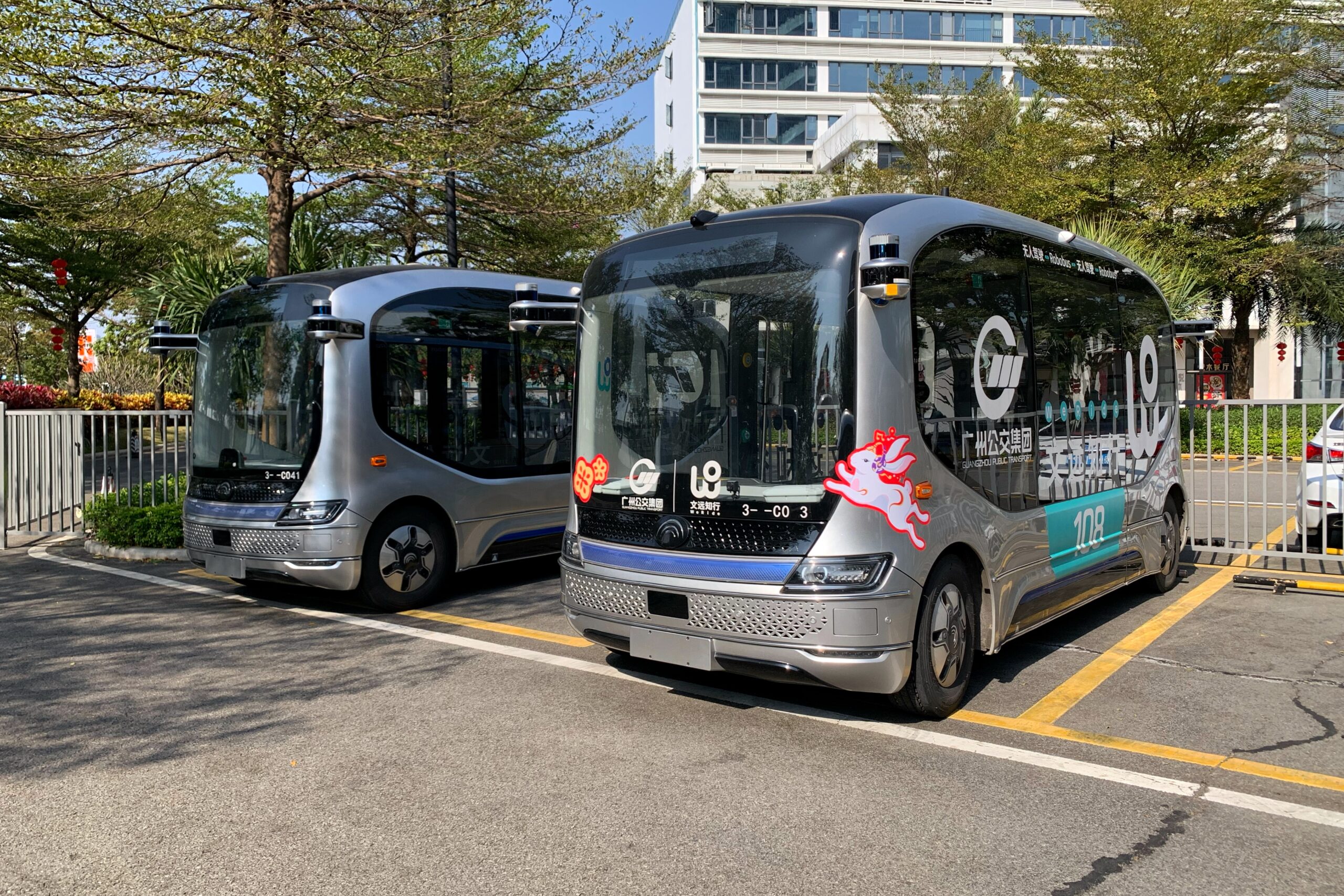
Robobus — a self-driving minibus designed by Chinese start-up, Guizhou Hankaisi Intelligent Technology Co., Ltd. (PIX Moving) — is set to soon pilot on the streets of Turin, the capital city of Northern Italy’s Piedmont. As Robobus places a focus on creating a luxury experience for passengers, it’s designed to be a “Moving Space” that’s a cut above regular public transport. PIX Moving intends to work with Tecnocad, a commercial vehicle company, to run the Robous on short-distance journeys through Turin.
First-of-its-kind design
The Robobus is 100% electric, which means it’s quieter, non-polluting, and better for the environment than its typical gas-powered counterpart. As electric vehicles generate between 17-30% less emissions than petrol and diesel vehicles, the Robobus has the potential to contribute to better air quality throughout Turin. It also doesn’t look like your average bus. The Robobus is missing a driver’s compartment, along with all the expected vehicle controls like the steering wheel, rearview mirrors, and pedal. But the coolest part is its symmetrical, bi-directional design — which means the bus looks exactly the same from front to back. This is so it can travel in both directions with ease.
Fully autonomous with room for human intervention
“The bottom of the minibus is an open source autonomous driving chassis. It is based on an independent modular platform, built with artificial intelligence technology and digital manufacturing technology, which can be installed with systems for different needs of customized services,” explains Angelo Yu, PIX Moving CEO. In particular, the Robous is a Level 4 autonomous vehicle, which means it’s fully autonomous. There’s no need for a human driver to intervene in most situations. The bus knows how to safely drive through a busy city environment, which includes coping with traffic, pedestrians, unexpected obstacles, and road signs.
However, a human driver can still take control when needed. If the minibus has a software glitch or comes to a standstill, a human can intervene to restore operations as needed, for example. This is likely a reassuring prospect for passengers who may not yet be used to riding in self-driving vehicles.
Artificial intelligence facilitates faster, smoother rides
Indeed, artificial intelligence is transforming the vehicle industry, and the auto transport industry is certainly no exception here. Around 14.5 million vehicles are shipped globally every year, and this involves its fair share of challenges. For example, lengthy routes need to be planned in order to prioritize timeliness and customer satisfaction, while also keeping fuel costs a minimum. Fortunately, artificial intelligence can optimize and adjust routes in real-time, so deliveries can be made promptly with minimal travel time and fuel consumption. In fact, artificial intelligence can increase fuel efficiency by up to 15%. “The rise of artificial intelligence […] offers the opportunity to transform all aspects of the transport system and tackle its biggest challenges”, notes Sara El-Hanfy, Head of Artificial Intelligence and Machine Learning at Innovate UK. “Examples include improving route planning, understanding the travel needs of people and businesses, predicting breakdowns, better forecasting and planning and simplifying paperwork”.
As for the Robobus, it also promises a quicker and more convenient travel experience for passengers thanks to artificial intelligence. This technology is used to adjust its route in real-time based on real-time traffic and weather conditions and passenger needs. Passengers can therefore enjoy a faster, smoother journey with less time stuck in traffic
Rigorous testing for safety
PIX Moving also says the Robobus will be thoroughly tested to see how it handles real-world conditions in Turin before it’s rolled-out for public use. If all goes well and the Robobus becomes a hit (which is very likely), PIX Moving will then export additional models to the area in order to fulfill demand. At the moment, the Robobus has room for six passengers, travels at a maximum speed of 30 km per hour, and has a battery range of 100-130 km per charge.
As the Robobus has already launched in a host of countries, such as, the U.S. Japan, Spain, and India, there’s no reason why it won’t do just as well in Turin. Once the Robobus is available for short-distance journeys, it’ll be easier and more enjoyable than ever to explore the city.
